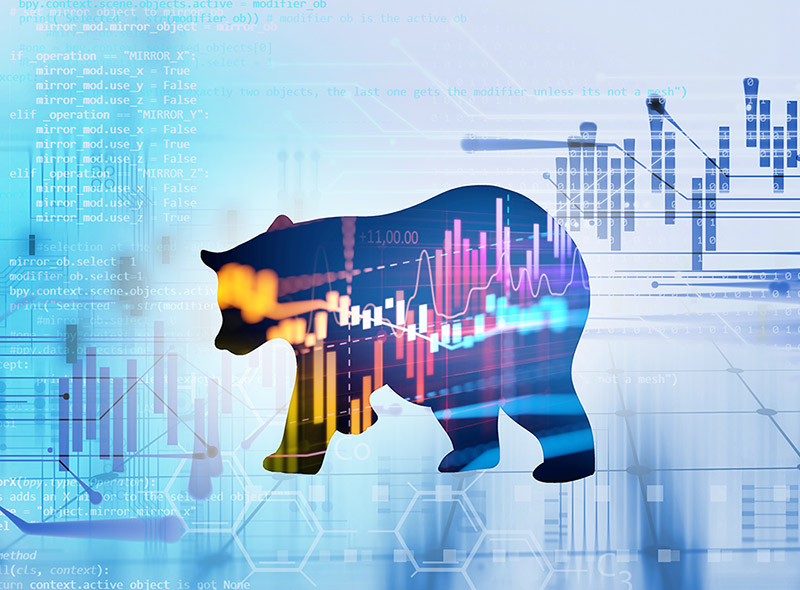嘉信理财借助AI判断投资者情绪

|
下次股市大跌时,把手机放在旁边,因为你的经纪公司可能会打电话来,给你一些建议。
如果你是嘉信理财的自我导向投资者,那么欢迎加入“看空项目”。总部设在旧金山的嘉信理财推出了这个半人工智能、半人工操作的项目,旨在防止投资者做出愚蠢的决定。
我们来看看这个项目是怎么运作的:由人工智能根据数以百计的行为或人口统计学属性来扫描客户群,如果算法计算出你有60%的可能在波动性很高时卖出股票,而市场正在剧烈震荡,那么你就会接到一个电话。
“研究表明,在熊市中卖出股票的投资者在随后几年里获得的平均回报较低。” 嘉信理财的投资服务执行副总裁特里·卡尔森说道,“因此,我们使用预测性建模来确定哪些客户可能容易受到市场情绪升温和噪音增加的影响。”
但这个项目不是要让你去做些什么,而是让你什么都别做。
举例来说,在2009年春季的上一次金融大动荡中,如果有人惊慌失措卖掉了所有股票,转而持有现金。这在当时算不上疯狂,因为整个金融体系似乎正在崩溃。然而最终这将会变成一个灾难性的决定。
但如果当时他并未选择退出市场,甚至买了更多的股票,那就很可能会迎来好日子。自从股市触底以来,标准普尔500指数的反弹已经超过250%。
这就是嘉信理财想要传递的信息。
因此,在波动性很高或熊市转折的时期,嘉信理财就会派人来给你讲这件事情。
而面临风险做出大动作的投资者通常是指在原投资组合中持有超过75%的股票,随后降至25%以下的人。嘉信理财表示,在公司的客户中大约有50万名此类投资者。与大多数客户相比,这类客户的高风险资产配置比例较高,而且交易频繁。
“这类客户可能会因为感到紧张而说:‘我要退出市场。’” 嘉信理财负责咨询和交易服务的高级副总裁巴里·梅泽尔说道,“当客户有这样的情绪时,往往会做出糟糕的决定。”
当然,该项目不能保证投资者会作何反应,也不能保证结果如何。梅泽尔表示,有些客户可能会听取并领会这种建议,但有些可能不置可否,有些甚至可能会怀疑打电话的原因,并抱怨道:“他们给我提供指导一定有自己的目的。”
但该项目从2018年12月开始试行,到目前为止其效果一直都令人鼓舞。与没有接到这种电话的对照组相比,收到来电的投资者撤出市场的资产减少了27%。而这些投资者的“客户促进者得分”,实际上就是他们的总体客户满意度,也有了明显的提高。
对金融公司来说,这种应用型人工智能可能只是一个开始。卡尔森表示,另一个可能发挥作用的例子是物理迁移,这在人的一生中平均会发生11次,可能会引发各种重大的财务事件,比如退休延期、新的保险责任范围和短期现金需求等。因此,如果人工智了解到你可能会搬到其他地方,那么嘉信理财就可以迅速采取行动。
至于“看空项目”,卡尔森将其比作帮助你为大型比赛进行训练的跑步应用。“基于速度和心率等数据,跑步应用能够帮助测量和预测你是否做好了准备。”卡尔森说道,她自己就是一名参加过21次马拉松的运动员。“如果你还没有准备好,那就找出哪些地方需要重新调整。”
如果想要顺利跑到退休的终点线,又有谁不需要一点帮助呢?(财富中文网) 译者:艾伦 审校:夏林 |
The next time the stock market tanks, keep your phone handy—it might be your brokerage on the line with a little advice.
If you’re a self-directed investor with Charles Schwab & Co., anyways. Welcome to “Project Bear”: The San Francisco-based brokerage’s part-artificial intelligence, part-human program to keep investors from making dumb decisions.
Here’s how it works: AI scans its client base for hundreds of behavioral or demographic attributes. If the algorithm figures that you have a 60% of greater likelihood of selling in times of high volatility, and the market is going wild—well, you’re getting a call.
“All the research shows research shows that investors who sell in bear markets have lower average returns in following years,” says Terri Kallsen, Schwab’s executive VP of investor services. “So we use predictive modeling to identify which clients might be vulnerable to increased emotion and noise in the markets.”
But the point isn’t to get you to do something, it’s usually to get you to do nothing.
Take the example of someone who panicked during the last great financial upheaval, back in the spring of 2009. If you sold everything and went to cash—not that crazy at the time, since the whole financial system seemed like it was melting down— that decision would turn out to be a catastrophic one.
Whereas if you stayed in the market, or maybe even bought more, then you very well may be set for life. Since the market bottom, the S&P 500 has rebounded by more than 250%.
That’s the kind of information that Schwab wants to impart.
So in periods of high volatility, or a bear-market turn, someone will be dispatched to talk you through it.
Schwab says it has identified around 500,000 of its investors who were at risk of making a big move, which they define as someone going from over 75% equities in their portfolio to below 25%. Those clients have higher-risk allocations than most, and are frequent traders.
“Those are the clients who might get nervous and say, ‘I’m out,’ ” says Barry Metzger, Schwab’s senior VP for advice and trading services. “When emotion comes into play like that, clients often make poor decisions.”
The program is no guarantee of investor response or outcomes, of course. Some clients may listen to and appreciate the advice, but some may be neutral—and some may even be skeptical of why Schwab is calling, and complain “they are self-directed for a reason,” Metzger says.
But the results so far—the program was piloted in December of 2018—have been encouraging. Investors who received an outreach withdrew 27% less in assets, compared to a control group who didn’t get a call. And the ‘Client Promoter Score’ of those investors—essentially, their overall customer satisfaction—also got a noticeable bump.
This kind of applied A.I. may be just the beginning for financial firms. Another example of where it might come into play, says Kallsen: A physical move, which happens on average 11 times over the course of one’s life. That can trigger all sorts of major financial events such as retirement rollovers, new insurance coverages, and short-term cash requirements. So if A.I. gets wind that you might be on the move, the firm can spring into action.
As for Project Bear, Kallsen likens it to a running app that helps you train for big races. “Based on data like pace and heart rate, a running app will help measure and predict whether you are ready,” says Kallsen, herself a 21-time marathoner. “If you’re not, then you can figure out where to readjust.”
And who doesn’t need a little help getting to the finish line of retirement. |













